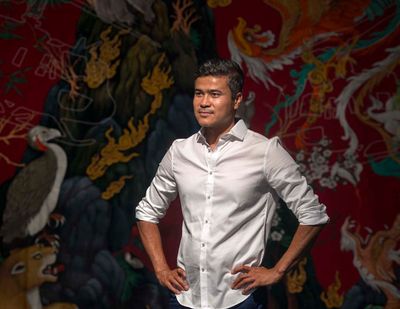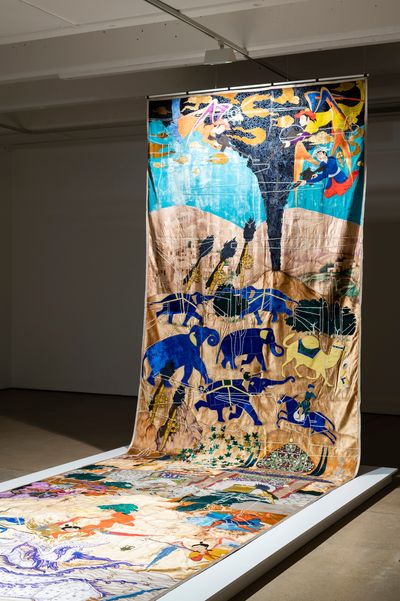Khadim Ali's Invisible Border Expands Tradition
IN PARTNERSHIP WITH INSTITUTE OF MODERN ART, BRISBANE
Source: Ocula

Khadim Ali. Courtesy Institute of Modern Art. Photo: Rhett Hammerton
Graduating from the National College of Arts in Lahore in 2003,
Khadim Ali's practice initially focused on traditional miniature painting before
expanding in media and scale.
Born in Quetta, Pakistan, and now based in Sydney, the artist's practice has attracted global acclaim for works that explore life in exile. At the Institute of Modern Art (IMA), the artist's exhibition Invisible Border (10 April–5 June 2021) is his largest in Australia to date, and explores the normalisation of war and the experiences of refugees through a phenomenal body of work, including the nine-metre-long tapestry Invisible Border 1 (2021), hand-woven by a community of Hazara men and women.
Ali's interest in tapestries developed soon after his parents' house in Quetta was destroyed by a car bomb. Amongst the rubble and debris that was left over, a collection of rugs remained perfectly intact, miraculously able to withstand the terror that was reigned upon the community. In this new large-scale tapestry work and the other work in this exhibition, Ali explores the impact of war, trauma, and displacement, drawing parallels from the book of The Shahnameh, Persian literature, current politics, and a whole range of sources, which he discusses in this conversation.

